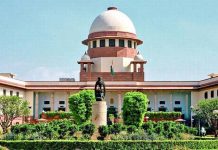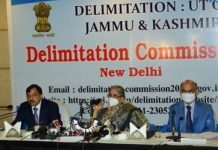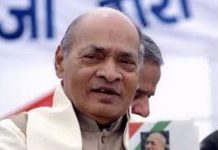Communal clashes occurred in more than 10 states across the country during Ramanavami festivities that were marred by provocative hate speeches. The common thread running through most of these incidents was the sensitive route chosen for procession, writes Mudit Mathur
Is India heading for planned conspiracy inciting religious clashes in the different states for the sake of pity interests of divisive politics in the run-up to the 2024 Lok Sabha elections? The question assumes significance in wake of recent communal clashes which erupted in many states during Ramanavami festivities and in pursuit of saffron agenda of religious polarisation. The country appears more divided than ever along Hindu-Muslim lines – and for many, Modi’s BJP is to blame for the mailaise.
Reports of communal violence appeared from West Bengal, Bihar, Jharkhand, Maharashtra, Telangana, Chhattisgarh, Gujarat, Jammu and Kashmir, Madhya Pradesh, Karnataka and Uttar Pradesh during Ramanavami and Hanuman Jayanti celebrations that mar with provocative hate speeches. Many feel that religious festivals like Ramanavami, Ganesh Chaturthi and the recently added Hanuman Jayanti are all being weaponised to target minorities and create communal disharmony and religious divide.
It was a virtual repeat of the communal clashes that had scorched Delhi’s Jahangirpuri and Madhya Pradesh’s Khargone amid Ramanavami and Hanuman Jayanti festivities in April last year (2022). It seems that no lessons have been learnt from those deplorable incidents. This year too, the Ramanavami festival occurred during the period of Ramzan and provided the backdrop for provocations in sensitive areas where Muslims were observing Ramzan and prayers in the mosques.
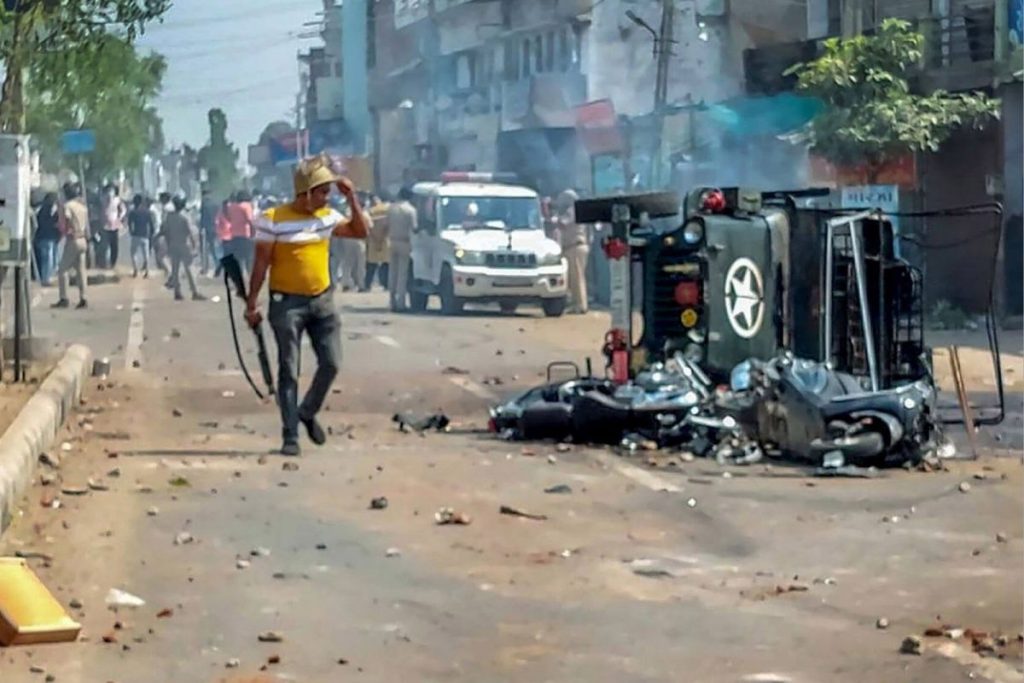
Most of these incidents were reported during such processions carried out by different groups of saffron brigade like the Rashtriya Swayamsevak Sangh, Vishwa Hindu Parishad and Bajrang Dal. Viral videos depict saffron-clad persons carrying weapons including swords and even guns taking part in Ramanavami processions. One of the videos that went viral on social media showed a man carrying a gun during a Ramanavami rally in Howrah who was later arrested from Bihar after his involvement came to light.
During these 10 days,Hindus celebrate Ramanavami and Hanuman Jayanti, Muslims keep fast as a part of the Ramazan month and Christians complete Lent that culminates in Good Friday and Easter depicting plurality of our multi ethnic nation.
Home Minister Amit Shah visited parts of Bihar that have been rocked by violence since Ramanavami and discussed the situation with the Governor V Arlekar. The anguish was more than palpable when he voiced his exasperation and remarked that “both Bihar sharif and Sasaram are burning and Nitish Kumar is helpless. He has lost control over administration”.
Tearing into the Mahagathbandhan government in Bihar for “failing to check” communal violence, Shah asserted that rioters will be hung upside down if the BJP forms the government in the state in 2025. The chief minister has failed in controlling the riots, Shah charged and said Nitish was being controlled by Lalu’s men. Jungle Raj had returned to Bihar, he remarked.
Bihar CM Nitish Kumar on Wednesday (April 5) rejected the BJP and AIMIM’s allegations of administrative lapses in the recent communal riots at Bihar Sharif and Sasaram towns during the Ramanavami processions and said the communal disturbances at both the places were carefully orchestrated by “some people.”But all administrative officers did a good job and successfully controlled it.
CPI(ML) secretary general Dipankar Bhattacharyareferred to Shah’s speech at Nawada wherein the Union home minister “brazenly called for a mandate for the BJP within hours of communal violence, thereby betraying their electoral game plan”. It may be mentioned that the Left supports the Bihar government from outside. In a meeting with the chief minister, Nitish Kumar, he alleged that the recent communal riots in the state “exposed” the BJP’s “electoral game plan.” Dipankar also expressed anguish that during the riots in Bihar Sharif, a 100-year-old madrassa and a library attached to it were gutted.
“There is no problem in Bihar now. Whatever the Deputy CM has said is right. There are some undesirable elements in Bihar that create such riots in the state. In recent days, there were some disturbances but the state Government controlled the situation within eight hours. Even when Nitish Kumar was in alliance with NDA, he jailed the son of a union minister as he tried to create communal disturbance in Bhagalpur,” said Janata Dal (United) President Lalan Singh while reacting the allegations of Bharatiya Janata Party on the law-and-order situation of Bihar.
“They try creating communal riots in the state but Nitish Kumar does not compromise with the peace, law and order of the state,” he added. He blamed the BJP for creating communal riots in Bihar.
Hooghly and Howrah in West Bengal; Lakhisarai, Nalanda and Kishanganj in Bihar; Dhanbad in Jharkhand; Aurangabad and Malad in Maharashtra; Khandwa and Khargone in Madhya Pradesh; Balidih and Vadodara (multiple incidents) in Gujarat; Mathura in Uttar Pradesh; Jammu City in Jammu and Kashmir; Hyderabad in Telangana.
Clashes broke out between two groups during a Ramanavami procession in West Bengal’s Hooghly district on 2nd April evening and spread to some parts of neighbouring Howrah district. Over 45 people were arrested, prohibitory orders were imposed and internet was suspended to bring the situation under control.
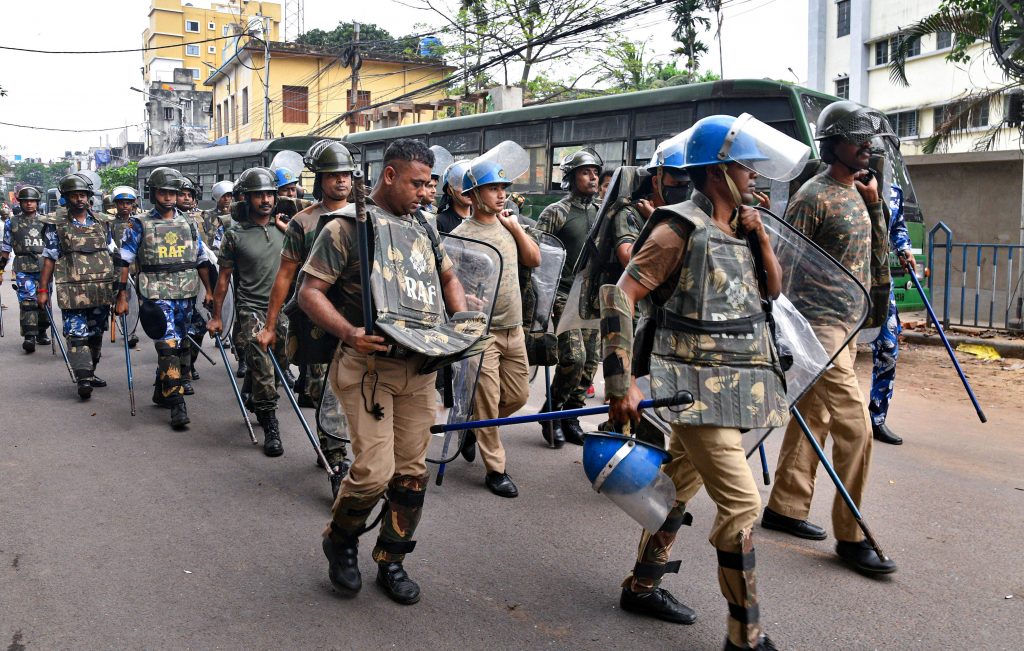
The procession was taken out two days after the Ramanavami, led by BJP vice-president Dilip Ghosh when the incident happened on GT Road under Rishra police station area. BJP MLA Biman Ghosh was injured in stone pelting and rushed to a hospital. Ghosh said,”There were many women and children in the procession who were walking with saffron flags in their hands. Suddenly, stones were hurled at us from one side of the road. Several policemen were also injured in the stone-pelting even though I and some other leaders were rescued and taken out of the area through adjacent lanes,” he claimed.
Earlier, West Bengal chief minister Mamata Banerjee on the eve of Ramanavami said, “We will not stop any Ramanavami procession. But remember, Ramazan is on…. Everybody has the right to bring out processions or conduct rallies. Nobody has the right to instigate riots.”
The ruling TMC questioned what was the need to organise the procession two days after Ramanavami. “Why are they so bent to take out Ramanavami processions during the holy month of Ramzan? Why the Ramanavami rally was taken out two days later? The BJP wants to engineer riots in Bengal to create instability for political gains,” TMC spokesperson Joyprakash Majumdar alleged. Majumdar also claimed that those in the rally were carrying weapons such as swords, which created panic among the people.
In Jharkhand, incidents of violence during Ramanavami processions were reported from at least three districts amid concerns over the increasing weaponization of religious festivals. Three key incidents of communal unrest took place across Jharkhand in Sahibganj, Hazaribagh, and East Singbhum.
Sahibganj witnessed violence on April 1 during the procession in Kihripara area of the city where two communities clashed during idol immersion. Both the sides threw stones and vandalised many vehicles and shops. Internet services were suspended on April 3 after a Hanuman idol was allegedly vandalised near the Patel Chowk police station of the city. Currently, the situation is tense but under control amid heavy police deployment in the area. The police have filed FIRs against 25-30 people, which included accused persons from both communities.
The second incident is linked to the Indrapuri mosque in Hazaribagh town. A video that ostensibly shows the mosque being vandalised has gone viral, in which people from the Ramanavami procession can be seen breaking down the mosque’s gate.“ The video that went viral feature our Indrapuri mosque. It was around 4.45 am on April 1 when around 300 people in the Ramanavami procession came raising slogans and broke the gate and glasses of the mosque. Stones were hurled. This happened in the presence of nine magistrate-level officers. We have filed a police complaint,” alleged the mosque committee president Zafarullah Sadiq.
The Hazaribagh Ramanavami Mahasamiti (organizing committee) president Kunal Yadav condemned the incident, and said “See, some of the akharas of the procession take this route, but there had never been an altercation earlier. This was a first. We have told the administration to punish those found guilty. There were some anti-social elements in the procession who carried out this mischief, to vitiate the atmosphere. I believe that nobody’s religious sentiments should be hurt.”
The third incident pertains to the Haldipokhar village of the Potka block in the East Singhbhum district. “The Ramanavami procession passed next to a mosque which was not on the official route sanctioned by the administration. The police and a part of the procession were trying to prevent people from taking the mosque route, but another group diverted the procession by force and indulged in provocative sloganeering. This led to a counter-protest from the mosque side, and some stones were pelted. Then, stones were hurled by both the sides. The police have now brought the situation under control,” said District SSP Prabhat Kumar.
In Gujarat, similar clashes were witnessed in Vadodara wherein stones were hurled at two Ramanavami processions on Thursday (April 6th) wherein some persons were injured in one of the incident. According to reports, stones were thrown at mosques and houses of Muslims. While the first incident took place near Panjrigar mohalla in the Fatehpura area in the afternoon, the second incident took place in nearby Kumbharwada in the evening. The procession that came under attack in Panjrigar mohalla had been organised by VHP.
The town of Una in Gujarat’s Gir Somnath district was gripped by communal tension after an alleged hate speech against a minority community by a Hindu social and political activist Kajal Hindustani at a Ramanavami event on Thursday (April 1st). After 10 days on Monday (10 April), the right-wing activist Kajal, was sent to 14-day judicial custody after her arrest in the case of alleged “hate speech”.
In Maharashtra on the eve of Ramanavami, in Kiradpura area of Chhatrapati Sambhajinagar (erstwhile Aurangabad), a mob of 500-600 people allegedly threw stones at police personnel near a prominent Ram temple. The violence left at least 10 of them injured, while 13 police vehicles were also torched. In retaliation, the police used tear gas and plastic bullets. In Mumbai’s Malad region, Muslims and Hindus clashed during a Ramanavami procession after some of them objected to loud music being played on speakers.
Hyderabad in Telangana witnessed a suspended BJP leader T Raja Singh making a derogatory speech during a Ramanavami procession. The city police have registered a case against him for the same. Making calls for an “Akhand Hindu Rashtra”, he addressed the gathering saying that when a “Hindu Rashtra” is formed, no more cows will die and the “jihadis” will be removed from India. He further said, “In our Hindu Rashtra, only those people who say ‘hum do, hamare do’ will be given the right to vote.” Videos also showed the people at the rally waving portraits of Nathuram Godse, the assassin of Mahatma Gandhi.
In Chhattisgarh, communal violence erupted after a fight between some school children in a small town Biranpur of Bemetara district having a population of around 1,300. A youth, Bhuvneshwar Sahu (23) of the village was killed while three policemen suffered injuries in the reactionary violence. The local administration imposed section 144 of the CrPC, which bars assembly of four or more people, in the area.
Communal tension further flared up after Vishwa Hindu Parishad (VHP) called for a state-wide bandh on 11 April in Chhattisgarh. All roads leading to the Biranpur village have been barricaded by the police. Chief Minister Bhupesh Baghel appealed to people to maintain peace. The opposition Bharatiya Janata Party (BJP) and the kin of the deceased, Ishwar Sahu blamed the police for the incident. Police arrested 11 people so far in this connection after registering cross FIRs of the parties.
In Karnataka, a Muslim cattle trader was beaten to death allegedly by cow vigilantes in BJP-ruled state. The ghastly incident took place weeks after a state minister described the May 10 Assembly elections as a “battle between cow protectors and cow slaughterers”. Idrees Pasha, 38, was on Saturday (April 1st) morning was found dead on a roadside in Sathanur village of Ramanagara district, about 150km from Bangalore, local police said.
The police, which have registered a murder case, said a group of five vigilantes had allegedly stopped Pasha’s cattle-laden truck in Sathanur on 31 March night and assaulted its three occupants. Syed Zaheer, one of Pasha’s two companions who survived the alleged attack, said the vigilantes refused to let the truck go even after Pasha told them he had papers to prove he had bought the animals at a cattle market. He said the assailants asked the trio to “go to Pakistan”.
Zaheer has in the FIR named the leader of the attackers as Puneet Kerehalli, a well-known local cow vigilante, police sources said. Later, a state police team arrested Puneeth Kerehalli, the group’s leader, along with his accomplices Gopi, Pawan Kumar, Suresh and PillingaAmbigar, from Banswara in Rajasthan.
Accused Puneeth Kerehalli, head of the Rashtra Rakshana Pade (Nation Protection Army), and a well-known cow vigilante, with Jnanendra having close links with BJP national general secretary C.T. Ravi, Lok Sabha member and BJP youth icon Tejasvi Surya, state energy minister V. Sunil Kumar, Lok Sabha member Pratap Simha and some other party functionaries.
In Uttar Pradesh, a clash erupted between two groups following a spat during a Ram Navami Shobha Yatra taken out near Shahi Masjid in Madiyav village under Jankipuram police station in Lucknow. The fight involved stone throwing and physical assault, sources said. An argument ensued between two groups after a man, identified as Sumit, along with 10-15 other people, played music on a DJ while passing by a mosque, which was objected to by another group.
Mathura district of Uttar Pradesh, the birth place of Lord Krishna, also saw aggressive postures of saffron supporters during Ramanavami. A few young men climbed atop the roofs of the shops around the Mathura’s Jama Masjid and placed saffron flags on them. This incident caused communal tension among the people of Hindu and Muslim communities. One the basis of viral CCTV footage, the police arrested four people in connection with the incident that took place in Uttar Pradesh’s Braj region during a Ram Navami procession at Chowk Bazaar in Mathura.
Rajya Sabha MP Kapil Sibal termed “another jumla” the Home Minister, Amit Shah’s remarks that riots don’t take place under the BJP rule, and cited the number of instances of communal violence under a BJP government at the Centre and in some states. Sibal said, “Amit Shah: ‘Riots don’t take place under our rule.’ Yet another jumla (rhetoric).” The former union minister said, “5415 communal riots were reported between 2014-2020 (NCRB data). In 2019 alone – 25 communal riots UP (9), Maharashtra (4), MP (2). Communal violence: Haryana (2021) highest cases, Gujarat, Madhya Pradesh (April 2022)”.
In the wake of communal violence in West Bengal and Bihar, Sibal questioned the “silence” of Prime Minister Modi over the matter, and said, “Let not 2024 general elections be the reason” for the violence.
Shiv Sena (UBT) MP Sanjay Raut has accused the Bharatiya Janata Party of a conspiracy to incite riots all over India in the run-up to the 2024 Lok Sabha elections for its political interests.







